Loire and Germany for dinner
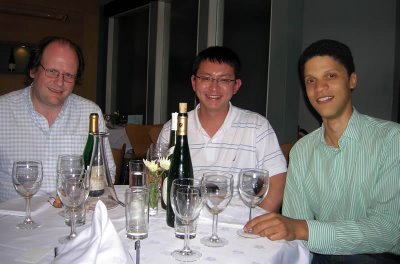 Yixin Ong was in town, so on Friday night he convened a wine nut dinner at RSJ, with myself, Rahsaan Maxwell and Tom Blach. Tom and Rahsaan are people whose writing I've read on the internet, but have never met before. It was a very nice evening, with some interesting wines and a couple of near misses - wines that were good but had the potential to show better. (Pictured, left to right, are Tom, Yixin and Rahsaan.)
Yixin Ong was in town, so on Friday night he convened a wine nut dinner at RSJ, with myself, Rahsaan Maxwell and Tom Blach. Tom and Rahsaan are people whose writing I've read on the internet, but have never met before. It was a very nice evening, with some interesting wines and a couple of near misses - wines that were good but had the potential to show better. (Pictured, left to right, are Tom, Yixin and Rahsaan.)We began with a sparkling Vouvray from Huet - a 1987 - which was quite lovely. It was delicate and bright, but had a little of that Chenin funk that worked really well. This was followed up with an old Muscadet - the 1990 Luneau Papin Muscadet Le L D’Or. Initially we wondered whether this might be corked, but then decided it was just showing rather faded, along with some distinctive savoury minerality that stuck out a bit. Not at ease with itself, and others had fared better with this wine recently. 2000 Domaine de la Bellivière Coteaux du Loir Hommage à Louis Derré was a remarkable, lightweight red wine with a minerally, gravelly edge framing some slightly meaty but otherwise very fresh fruit. Lovely and expressive: points chasers would hate this. Then we moved on to a pair of Germans. 2006 Willi Schaefer Graacher Domprobst Spätlese #17 was expressive, minerally and a bit zippy from some carbon dioxide, and had some lovely weight to the fruit. 2006 Daniel Vollenweider Wolfer Goldgrube Spätlese GK was much richer, with over 100 grams/litre of residual sugar, and a thick, rich texture. Stylish and in need of some time for the complexity to emerge from all that sweetness. Finally, we went for a big gun, spotting the 1971 Huet Clos du Bourg Moelleux 1ère Trie on the list at a decent-ish price. Sadly, it was tiring a bit. It came up at room temperature, so we decanted and chilled it in the ice bucket, only for it to turn from light brown to dark brown in 20 minutes. It was still nice - under the oxidation there was the memory of a complex wine, but sweet Vouvray is usually pretty much immortal, so it was a shame not to get a pristine bottle. The evening came to an end and we were relatively full of wine, and Yixin was tired enough to fall asleep on the last train home. But he bravely revived enough when we got back to crack open a half of Reinhold Haart 2005 Piesporter Goldtropfchen Riesling Auslese, which was showing lovely lush fruit with a nice transparency to it, and the promise of greater things to come.
Evenings like this remind me why wine is such an interesting subject.
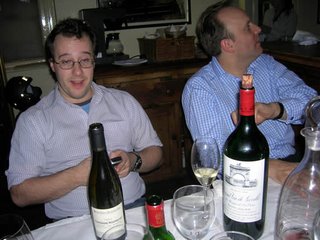
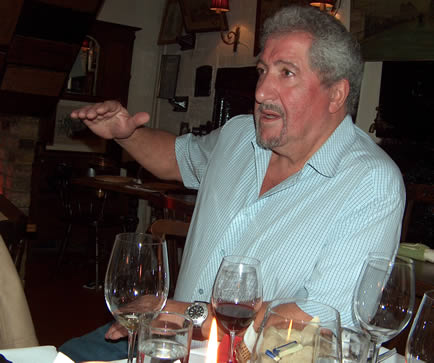
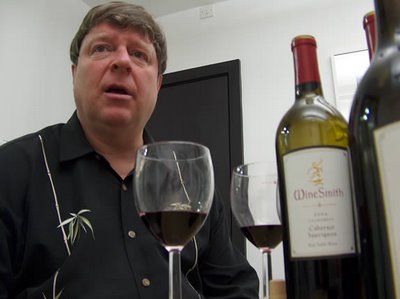
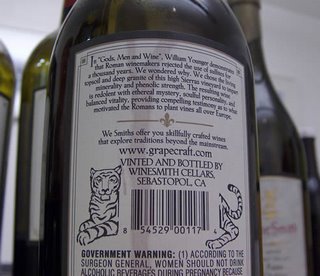
 The web log of wine journalist Jamie Goode. Feel free to nose around; your comments are welcome
The web log of wine journalist Jamie Goode. Feel free to nose around; your comments are welcome 
